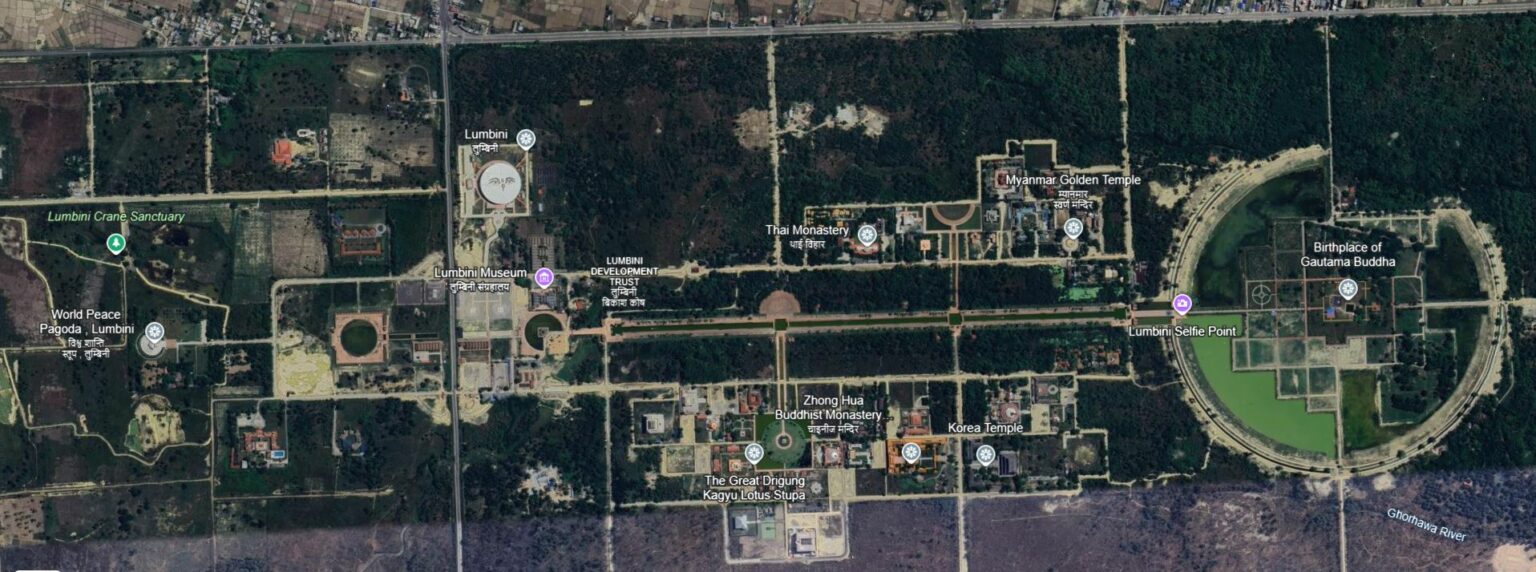Kathmandu: After the Supreme Court, on 27 August 2025, ordered industries operating within 15 kilometres of the Lumbini area to relocate within two years, dozens of industrialists operating in the region have been left sleepless.
They expressed concern that their decades-long investments worth billions are suddenly at risk.
Industrialists said they had never imagined such an order would come from the joint bench of Justices Kumar Regmi and Sunil Kumar Pokharel.
Basing its decision on the Industrial Promotion Board’s resolution of 27 November 2009, the Supreme Court ordered the closure or relocation within two years of polluting factories and industries to ensure a pollution-free Lumbini and safeguard its long-term preservation.
“The provision that prohibits establishing any new dust, smoke, or carbon-emitting industries within 15 kilometres east, west, and north of the Lumbini boundary wall, and up to the Indian border in the south, must be enforced,” the order states. “Industries registered and operating before 27 November 2009 that pollute must also be closed or relocated within two years,” it added.
However, the Supreme Court order makes no mention of safeguarding the billions already invested in industries in the region, causing stress for industrialists.
“We are not against protecting heritage, but we had established our industries with state approval in the past,” said industrialists Hari Neupane (Ambe Steel) and Pashupati Murarka (Arghakhanchi Cement) to Clickmandu. “The Constitution guarantees citizens’ property rights, but we are saddened that the Supreme Court’s order does not mention compensation.”
According to industrialists, dozens of factories are operating in the Lumbini–Bhairahawa corridor, providing employment to thousands and with investments amounting to around Rs 50 billion.
“What will happen to this Rs 50 billion investment? The court should consider this,” said Neupane and Murarka. “Even if the brief order did not mention it, we trust the honourable court will include compensation in the full text, ensuring citizens’ constitutional property rights.”
The writ petition filed by senior advocate Prakashmani Sharma, executive chair of Public Interest Protection Forum, pointed out that the Industrial Promotion Board had already prioritized relocation of industries registered before 2009. The Board’s decision on 27 November 2009 prohibited capital expansion, capacity increase, additional objectives, or electricity capacity expansion for existing industries, which the court interpreted as a clear indication of relocation intent.
According to the Supreme Court’s order, all polluting industries within 15 kilometres of Lumbini’s boundary wall must be shut down or relocated within two years. The court did not examine in detail how industries beyond 15 kilometres affect Lumbini. It stated that once relocated, the vacated land could be repurposed for tourism-friendly businesses, with necessary incentives provided.
“It is impossible to relocate an industry in two years,” said Neupane. “It takes at least 7–8 years. The court should understand this practical issue.”
For industrialists, “relocate within two years” effectively means “shut down industries.”
The court also ordered a ban on the movement of public vehicles with a carrying capacity above 19 tons within 800 metres on either side of the Lumbini–Bhairahawa corridor road and within 15 kilometres of the Lumbini boundary.
The Supreme Court also cited provisions of the Environment Protection Act, which required industries registered before 2009 to meet pollution control standards or be relocated within two years if they failed to comply.

The Court emphasized that Lumbini is not only Nepal’s but also world humanity’s heritage, ordering that dust, smoke, and carbon-emitting industries be closed or relocated to ensure long-term preservation of the Lumbini area.
The writ was filed against Goenka Cement, Siddhartha Cement, Kailash Cement, Shriram Cement, Nepal Ambuja Cement, and Shyam Plywood. The order also impacts Ambe Steel, Brij Cement, Arghakhanchi Cement, Jagdamba Cement, Himal Snacks, and other industries.
The area holds both domestic and foreign investment. Industrialists were shocked that the court, while mandated to protect the Constitution, remained silent on property rights. Investments worth around Rs 50 billion in large and medium-scale industries have suddenly come under threat, leaving industrialists deeply worried.
“If the full text also excludes compensation, we will be compelled to knock on the court’s doors for review,” said another industrialist. “How can industries contribute to the national economy if they are dragged into property rights battles instead?”
Interestingly, Lumbini was listed as a World Heritage Site back in 2010, i.e., 15 years ago. Since then, the government granted permits for dozens of industries within the 15 km perimetre. Now, the court has suddenly ordered their closure, which experts describe as an emotional rather than practical decision—one that will be very difficult for the government to implement.
The state treasury lacks funds, and what little exists must be directed to development projects. Public frustration is high due to the lack of visible development, and people are angry at the government and political parties. The Supreme Court’s order now obliges the government to spend billions to relocate industries.
These industries employ thousands, pay billions in taxes, and owe banks loans amounting to nearly a trillion rupees. With only a two-year future left, banks have already started pressuring industries to repay loans.
“Banks have already asked me what will happen next,” said another industrialist. “What answer am I supposed to give?”
The court seems to have not discussed alternative measures—such as making industries environmentally friendly, or studying pollution and carbon emission levels. By reaching a strict decision without exploring alternatives, it has sent a negative message to investors.
“If enough discussion had been held, practical solutions could have been found,” said Neupane of Ambe Steel. “We are already installing modern equipment to control emissions, and even a parliamentary subcommittee found our efforts sufficient. But the court did not consider this.”
Pashupati Murarka:
“The honourable court has issued a verdict to relocate industries from the Lumbini area. The full text is yet to come. But from the summary, it seems industries in the Lumbini–Bhairahawa region will be displaced.
The ruling does not specify what level of dust or smoke emissions make industries unfit for Lumbini. It should clearly state how much emission affects Lumbini. Even if smoke is emitted, does it contain carbon? Does it reach Lumbini? This must be considered.
Lumbini is our heritage—the birthplace of Gautam Buddha. We cannot relocate Lumbini itself. If industries must be moved for its preservation and beautification, it will take time—at least five years to set up elsewhere. Land must be secured, environmental assessments done, machinery relocated (often at huge losses). My estimate is 60 percent losses. These costs ultimately add to product prices.
The state must compensate. Otherwise, industries cannot survive. The government must provide a fair compensation scheme and sufficient time. Otherwise, implementation will be very difficult.”



Comment Here